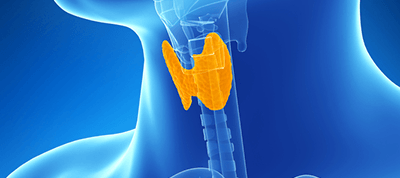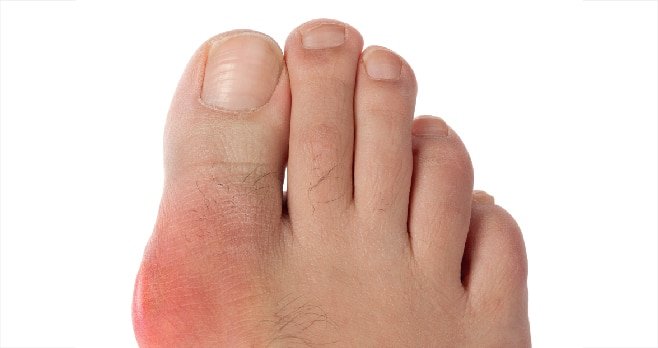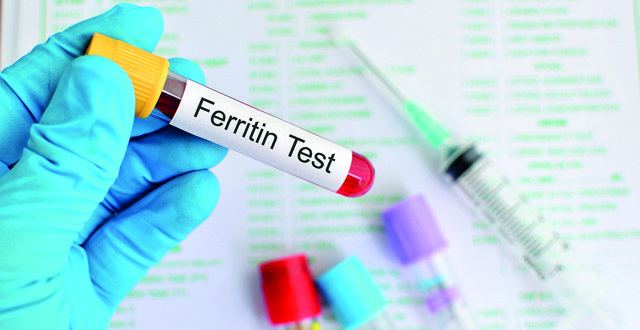Parkinson’s disease (PD) is a neurodegenerative disorder associated with a wide range of symptoms, which are typically divided into motor and non-motor symptoms.
PD affects approximately 1 per cent of individuals older than 60 years, with prevalence slightly higher in men than women. It is considered a predominantly motor disorder and the most common motor symptoms are: Tremor, rigidity, bradykinesia and postural instability.
The pathological hallmarks of PD are the presence of Lewy bodies (LB) constituted of α-synuclein protein, loss of dopaminergic neurons in pigmented brainstem nuclei and damage in the substantia nigra. In PD, LB are present in the cortex, brainstem and basal ganglia; their load correlates with the progression of the disease. PD may be associated with abnormal folding of α-synuclein, leading to excessive aggregation, causing neuronal death.
Dementia is common and affects approximately 40 per cent of PD patients. After 10 years of motor symptoms, nearly 80 per cent of patients will have dementia.
Dementia occurs in PD, either as a consequence of the pathological process underlying PD itself (dementia with Lewy bodies (DLB), Parkinson disease-associated dementia (PDD)) or as an additional pathological process causing dementia (ie, Alzheimer’s disease (AD), vascular dementia).
Both DLB and PDD are clinical syndromes associated with LB disease pathology.
The clinical primary distinction between the two syndromes is the temporal association of dementia and Parkinsonism: The term PDD is applied when the onset of dementia is at least one year after the onset of Parkinsonism and DLB is applied when the onset of dementia is within one year of Parkinsonism onset or dementia onset occurring concurrently or any time before the onset of Parkinsonism.
The overlap of clinical symptoms between PDD and DLB suggests that they probably represent different points on a spectrum of LB diseases sharing similar underlying process.
Dementia with Lewy bodies
A diagnosis of clinically-probable DLB requires the presence of dementia, defined as a progressive decline of sufficient magnitude to interfere with normal social or occupational functions, plus two or more core clinical features to be present, with or without indicative biomarkers, or the presence of only one core clinical feature, but with one or more indicative biomarkers.
Core clinical features:
Fluctuation in cognition with pronounced variations in attention and alertness.
Recurrent, fully-formed visual hallucinations.
REM sleep behaviour disorder (RBD), which may precede cognitive decline.
One or more spontaneous cardinal features of Parkinsonism: These are bradykinesia, rest tremor, or rigidity.
Indicative biomarkers:
Reduced dopamine transporter uptake in basal ganglia, demonstrated by SPECT or PET.
Low-uptake meta-iodobenzylguanidine (MIBG) myocardial scintigraphy.
A formal sleep study confirms the presence of REM sleep behaviour disorder.
Supportive clinical features include: Repeated falls; syncope and transient episodes of unresponsiveness, neuroleptic sensitivity; delusions, such as Capgras syndrome; hallucinations in other modalities; autonomic features — orthostatic hypotension, impotence, urinary incontinence and constipation; apathy; anxiety; depression; and hypersomnia.
DLB seems to be under-diagnosed in clinical practice. The biggest challenge in the diagnosis of DLB is early diagnosis and differentiation from Alzheimer’s disease.
DLB accounts for 15-to-20 per cent of all autopsy-confirmed dementias in old age.
Impairment in attention/concentration, executive and visuospatial functioning, with relative preservation in confrontation naming and verbal memory can be considered the prototypical neuropsychological profile of impairment in DLB.
The presence of early, severe visuospatial impairment and visual hallucinations in DLB predicts rapid decline and might identify patients whose clinical syndrome is due to DLB/PDD, rather than Alzheimer’s disease pathology.
The presence of amyloid deposition in patients with DLB is in association with faster cognitive decline.
One observation in DLB is the relative lack of anosognosia — these patients are typically bothered by their cognitive symptoms, they seek treatment on how to improve it, whereas patients with AD typically have lack of insight.
One of the core clinical features is RBD, which is relevant and strongly associated with α-synucleinopathies. The presence of RBD increases the diagnostic likelihood of synucleinopathy-spectrum disorders compared with AD and the primary tauopathies.
Hallucinations in DLB are typically vivid and well-formed false perceptions of insects, animals or people. They can be in black and white or in colour. Many patients can realise that they are not actually real, however some patients find them frightening. Visual illusions are also common in DLB, in which the perception of the objects is different. A typical example is perceiving trees, chairs and lamps as people.
Treatment
The management of patients with DLB is challenging and complex. Patients with DLB are prone to mental status worsening, including delirium, in the face of comorbid medical disorders. There are no disease-modifying drugs, so treatment is directed towards symptoms.
Cognitive symptoms: There is consistent support that cholinesterase inhibitors (ChEIs) such as donepezil and rivastigmine are effective and relatively safe for improving cognition, neuropsychiatric symptoms and activities of living. Patients taking ChEIs are less apathetic, less anxious and have fewer delusions and hallucinations. The efficacy of memantine in DLB is less clear, but it is well tolerated and may have benefits, either as monotherapy or adjunctive to a ChEI.
Neuropsychiatric symptoms: Severe hypersensitivity reactions to antipsychotics with motor and cognitive worsening can occur in DLB.
The first step to reduce the visual hallucinations is reducing dopaminergic drugs; if this is not possible, a practical option would be to start treatment with a ChEI. If symptoms do not improve and treatment is strongly indicated, low doses of quetiapine or clozapine could be considered. Pimavanserin, a new, selective serotonin 5-HT2A inverse agonist, may reduce psychosis symptoms without worsening motor function.
Antidepressants might improve depression in patients with PD, but tricyclic antidepressants should be avoided because of their anticholinergic effects. Selective serotonin reuptake inhibitors (SSRI) and multi-receptor antidepressants, ie, nefazodone, mirtazapine and venlafaxine, have a better profile for the treatment of depressed DLB patients.
Motor symptoms: The same medications that are used in PD for movement symptoms are used in DLB, but they are usually less effective than in PD. However, the use of dopaminergic agents is often limited due to the increased risk of psychosis.
PD dementia
Cognitive impairment also occurs in patients with PD without dementia, which is termed ‘mild cognitive impairment in Parkinson’s disease’ (PD-MCI).
Around 25 per cent of non-demented PD patients have PD-MCI. The frequency of PD-MCI increases with age, disease duration and disease severity. The common deficits that are found include slowness of thought and reasoning, poor recall, and difficulty in changing cognitive strategies when faced with new tasks (cognitive inflexibility). PD-MCI is a risk factor to developing PDD, although this risk might depend on the profile of cognitive impairment.
Executive dysfunction can be notable, and is primarily linked to nigrostriatal dopaminergic loss in PD-MCI. Once patients develop dementia, executive deficits are more prominent and disabling, but are of little use for differential diagnosis.
In PDD, the main challenge is prediction and timely identification of cognitive impairment in patients with PD.
Core clinical features:
Diagnosis of PD according to Queen Square Brain Bank Criteria.
Dementia developing in the context of established PD, with cognitive impairment in more than one cognitive domain and severe enough to impair daily life.
Associated clinical features:
Typical cognitive profile — impairment in at least two of the following domains: Attention, which may fluctuate; executive function; visuospatial function; and free recall, which usually improves with cueing.
Presence of behavioural features supports, but absence does not exclude, diagnosis. Includes apathy, depressed or anxious mood, hallucinations, delusions, and excessive daytime sleepiness.
For the diagnosis of probable PDD, both core clinical features are necessary and impairment in two of the four cognitive domains and at least one behavioural symptom.
Possible PDD: Both core features must be present and impairment in one or more cognitive domain; behavioural symptoms may or may not be present.
Other motor and non-motor features: Non-L-dopa responsive features are classically considered to be axial disturbance, including postural instability gait disorder, as well as facial masking and speech disturbance. These features are predictive of incident dementia.
Autonomic features in PDD are similar to those in DLB, although the severity of orthostatic hypotension may be greater.
Fluctuations in PDD have classically been considered in the motor aspect, with motor fluctuations being very frequent and challenging to manage. Fluctuations in cognition and arousal clearly occur in PDD, but have not been well studied.
Patients with PDD have a more rapid motor decline, and falls are more frequent. RBD and excessive daytime sleepiness occur both in demented and non-demented PD patients, but may be more frequent in association with dementia; the presence of RBD may be useful in differentiating PDD from AD.
Recurrent and fully-formed visual hallucinations and delusions are common in PDD. When found in non-demented patients, hallucinations are a major predictor of subsequent dementia and nursing home placement. Paranoid delusions and ‘phantom boarder’ are among the most common content in both disorders, PDD and DLB.
In general, patients with PDD appear to have less-frequent or less-severe psychiatric symptoms than patients with DLB.
Treatment
The management of PDD does not differ from the treatment of DLB.
For overall treatment of the cognitive impairment, the European Federation of Neurological Societies/Movement Disorder Society — European Section (EFNS/MDS-ES) has recommended both discontinuation of medications that might impair cognition and cause confusion (ie, anticholinergics, amantadine and dopamine agonist) and the addition of a ChEI, either with rivastigmine (level A) or with donepezil (level C). This approach may also help in the treatment of psychosis in this population.
Severe hypersensitivity reactions to antipsychotics with motor and cognitive worsening can occur in all forms of PD-related dementias. There is no different approach in the management of the neuropsychiatric symptoms and motor symptoms in comparison with DLB treatment.
References on request









Leave a Reply
You must be logged in to post a comment.